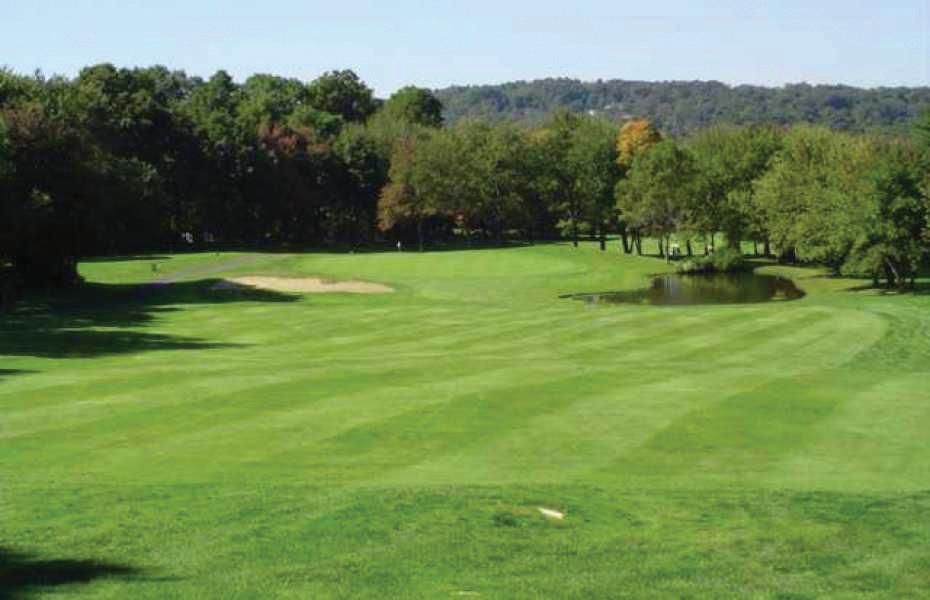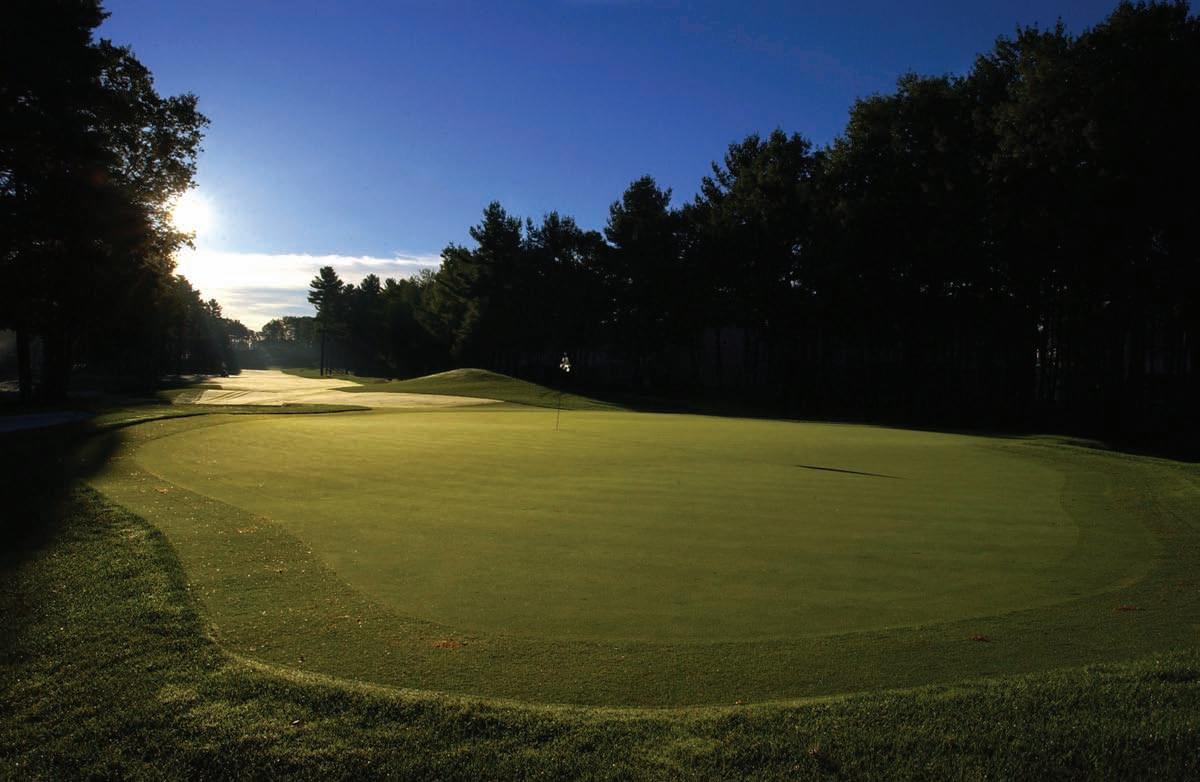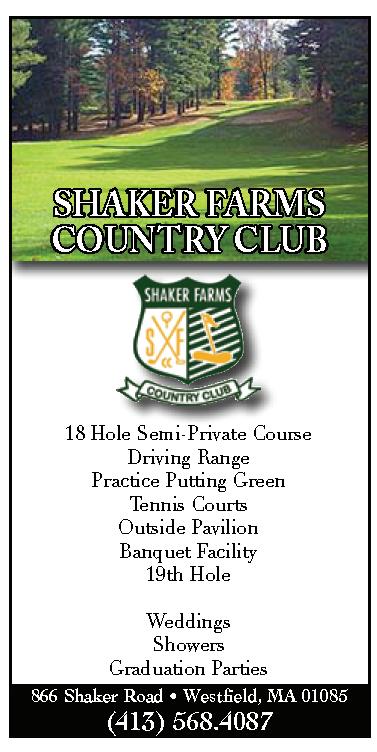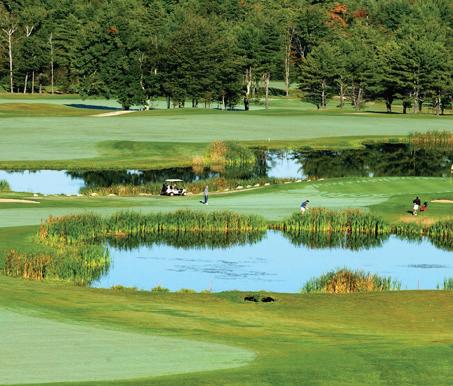
12 minute read
Golfing Fun in Connecticut
By TOM LANDERS
Golfing Magazine’s “Free Golf” program you get a complimentary round of golf on a number of courses in Connecticut when you sign up. Call 860563-1633, or visit www.FreeGolf.net to get aboard and take a road trip through the Nutmeg State.
Here are the layouts, some of which are private, that you can play for a cart or a small service fee by partnering with us.
Private Courses
The Golf Club at River Oaks (www.ClubRiverOaks.com) is located on the Sherman/New Milford town line in western Connecticut. The courses has a number of holes on its back nine that hug the Housatonic River, which is visible through the trees in late autumn or early spring. The look from the tee box on the par-four dogleg left ninth hole reminds one of playing golf in northern New England rather than Connecticut. Many consider this to be one of the top two or three courses in the state. Robert McNeil designed the course that opened in 2003, and he built into it challenge and fairness.
Farmington Woods Country Club (www.FarmingtonWoods.com) in Avon was designed by American designer Desmond Muirhead, who also crafted the famed Jack Nicklaus Muirfield Village course in Ohio. The layout is unique to the Farmington River Valley area in that there are dramatic elevation changes in what is usually a rather flat section of Connecticut. The course features woods that line many of the fairways, as well as wetlands.
Tumble Brook Country Club (www.TumbleBrookCC.com) was incorporated and organized in 1922 and features 27 holes. Willie Park, one of the foremost golf course architects of the time, was commissioned to design the first nine. A second nine, designed by Orrin E. Smith, was opened to play in the spring of 1949. The third nine, designed by George Fazio, opened for limited play in the fall of 1970, and was eventually integrated with the rest of the golf course in 1971.The seventh hole on the “Green Course,” a combination of two of the three nines, is a 440-yard beast where par is an accomplishment for any level of player
THE GREATER HARTFORD AREA
Simsbury Farms Golf Course (www.SimsburyFarms.com), which measures 6,509 yards in length from the championship markers, was designed by Geoffrey Cornish and opened for play in 1972. Recognized as one of the top 100 courses in New England by one New England publication, the course provides an excellent test of golf and a visually pleasing round. A driving range and large practice green, as well as a newly constructed clubhouse compliment the golfing complex.
Blue Fox Run Golf Course (www.BlueFoxEnt.com) in Avon has 27 holes of golf. A new nine was added several years ago and these holes are a pleasing mix of those that are open in nature and several that are lined by trees. There is ample bunkering in the fairways and around the modest-sized greens. One of the best new holes is the 512yard par-five fourth on the White Course. If you can steer clear of fairway bunkers to the left of the fairway and high grass on the right, you may be left with an opportunity to go for a large, oblong green in two.
The Kemp family of purchased the Airways Golf Course (www.AirwaysGolfCourse.com) in West Suffield in 1996 with the intent of providing good, affordable and friendly golf to the town and surrounding communities. Their course is on the short side, 5,845 yards from the tips, and you can score here as long as you drive the ball well. Included in the final five holes of the front side are four par-fours measuring around 300 yards, including the ninth at 273 yards. The 16th is a strong par-five playing 481 yards from the tips. The hole doglegs to the right and there is water to worry about off the tee and on the second shot.
Keney Park Golf Course (www. KeneyParkGolfCourse.com) in Hartford underwent renovations and upgrades that turned the par-70 track in the 700-acre Keney Park into a beauty. The first nine holes of the course were finished in 1927, and the remaining nine were completed in 1930. Keney was designed by notable early 20th century American architect Devereux Emmet, who has several illustrious courses to his credit, including Congressional Country Club in Bethesda, Md., the site of several U.S. Opens.
Goodwin Park Golf Course (www.GoodwinParkGolfCourse.com) in Hartford offers 27 holes, with the shortish North Course (2,544 yards) a great place for beginners and senior players to hone their skills and enjoy a leisurely round. The more demanding 18-hole course plays around 6,000 yards from the back markers and features a number of par-fours that are drivable, or approachable, off the tee for long hitters. The 381-yard ninth hole may be the toughest par-four on the track.
Gillette Ridge Golf Club (www.GilletteRidgeGolf.com) in Bloomfield is an Arnold Palmer Signature course and a layout that fits nicely into the existing natural landscape. Great care was taken to preserve the numerous trees that serve to frame fairways and greens, as well as the ample wetlands on the property.
The architects built a number of peninsula or island greens, using granite from the site to construct walls near several greens and tee boxes. There are some forced carries at Gillette Ridge, both off the tee and on approach shots to the medium size, undulating putting sur- challenging and perplexing opening holes you will find anywhere. It’s only 368 yards from the back tees, but a stream dissects the fairway a little over halfway to the green, so the dilemma is to take driver and risk hitting it short or right and into the water, or lay up and be left with a long approach to an elevated green. The 10th hole is a demanding 587-yard par-five that bends to the left and has water hazards on the left side of the fairway and near the green, which makes the second shot and approach tricky. faces, but nothing so daunting to scare away the average player. Bunkers, ponds or wetlands come into play on almost half the holes. The fairway landing areas are ample.
The 27-hole Stanley Golf Course (www.StanleyGolf. com) in New Britain has long been considered one of the premier daily fee facilities in the state. With three distinct nines to select from and some of the best conditions in the Greater Hartford area, Stanley has a dedicated following among the state’s golfers. Some modifications were made a few years back to the course, with several new or reshaped holes created and some shifting of the nines, which made the course even more interesting and more challenging.
East Hartford Golf Club (www.EastHartfordGC.com) was designed by Al Zikorus, plays around 6,200 yards from the tips, and has a nice mix of short par-fours that can be attacked with driver, reachable-intwo par-fives and solid par-threes. There are a number of tee settings to cater to all abilities. This classical design is great for newcomers to the game, but tree-lined fairways and small greens present a challenge to even the most skilled golfer.
Hunter Golf Club (www.HunterGolfClub.com) in Meriden offers great views of surrounding trap rock ridges and Castle Craig in Meriden’s Hubbard Park, which can be seen while playing the fifth hole. The layout has one of the most

Manchester Country Club
(www.ManchesterCountryClub.com) opened in 1917 and was designed by two early 20th century course architects, Tom Bendelow and Devereaux Emmett, the latter creating famed Congressional Country Club in Washington, D.C., and Keney Park’s golf course. Manchester has bunkers placed strategically around fairway landing areas and putting surfaces, which puts a premium on accuracy both off the tee and on approaches to medium-sized greens. The course plays 6,339 yards from the tips and has a par of 72. There are some elevation changes and water comes into play on several holes.
In Glastonbury, you will find the nine-hole Minnechaug Golf Course (www.MinnechaugGolf.com). The well-manicured layout is only 2,668 yards from the back markers and plays to a par of 35. But the fairways are narrow and the par-threes demanding. The course features a true island green, a 125-yarder that plays from an elevated tee box.
One of the best-conditioned, playerfriendly tracks in Connecticut is Rockledge Country Club (www.GolfRockledge.com) in West Hartford. The relatively flat layout has a parkland setting and offers a pleasing mix of holes. Rockledge has a mix of holes, ranging from short par-fours, like the 290yard second and 317-yard 11th, where birdies await, to classic risk/reward par-fives.
Timberlin Golf Club (www.TimberlinGolf.com) in Berlin also has a park-like routing, and was given a facelift a few years back in the form of new bunker complexes, fairway and green complex work, an effort led by noted golf course architects Stephen Kay and Doug Smith. The track is kept in immaculate condition and the renovations added more teeth to this scenic track, originally designed by Al Zikorus.
The Greater Waterbury Area
Established in 1902, Pequabuck Golf Course (www.PequabuckGolf.com) in Bristol is a par-69 course that has a pleasing mix of two par-fives, 11 par-fours and five par-threes. Here, you will be called upon to use every club in your bag and strategy plays a vital role in success as you navigate this well-manicured layout that has the distinction recently of being voted on Golf Advisor as the “13th Most Improved Golf Course in the United States”. While on the short side at just over
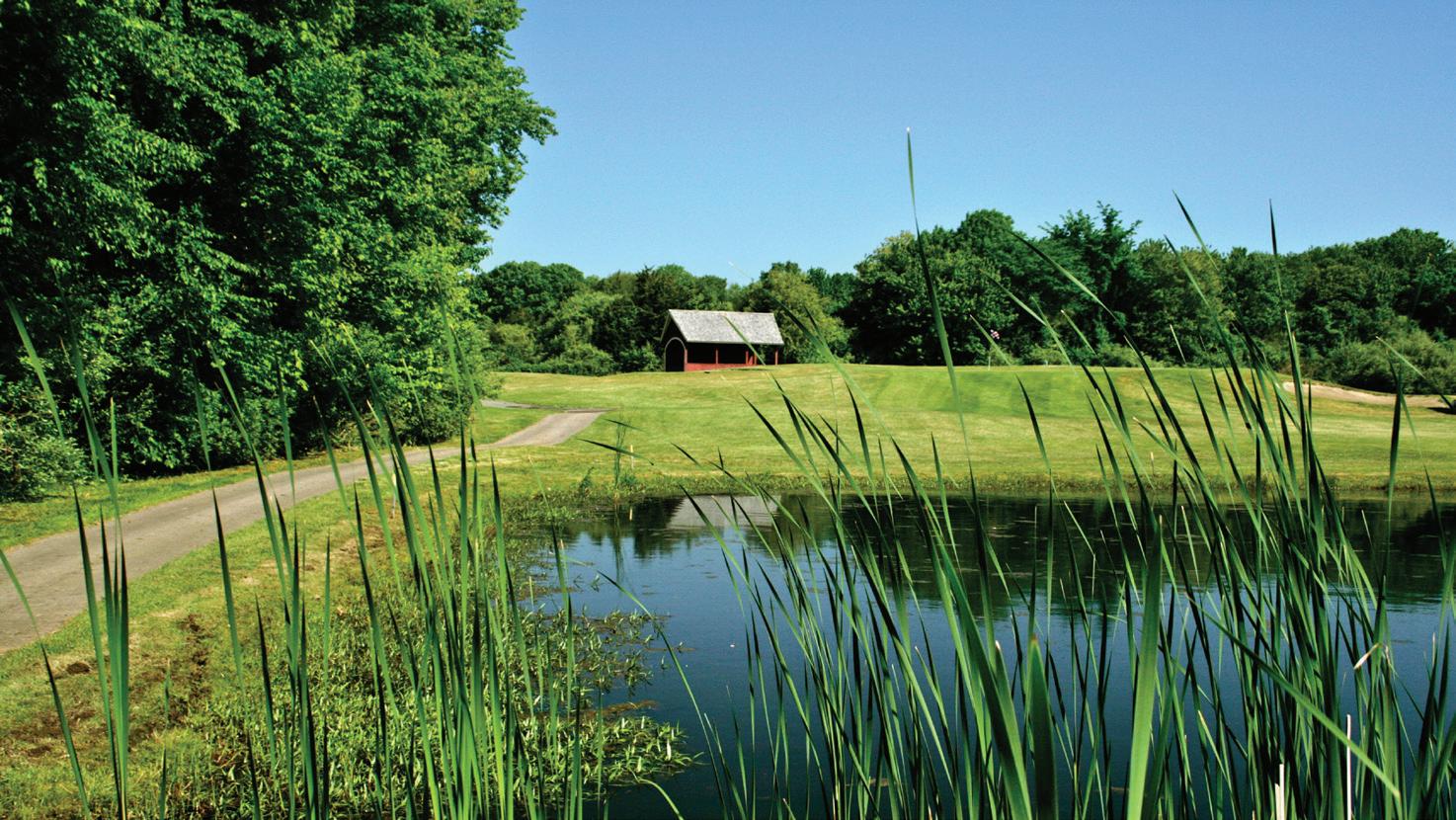
6,015 yards from the tips, Pequabuck is no pushover. It starts with a relaxing par-four that measures around 300 yards and gets you off and on your way with a chance to make birdie.
Originally a nine-hole private golf club, purchased by the town of Watertown in 1975, a second nine holes were added in 1980 to make Crestbrook Park Golf Course (www.CrestbrookPark.com) one of the best daily fee tracts in the area. Crestbrook features fast, sloping greens and has four sets of tees for all levels of play. The course, which plays almost 7,000 yards from the tips and features a number of elevation changes, has par-fives that demand thoughtful tee and approach shots and beefy par-threes, like the 228-yard seventh where the tee shot must clear a pond to reach the putting surface.
Southington Country Club
(www.SouthingtonCountryClub.com) is fairly wide open with a few delightfully quirky holes, such as the deceptively short 306-yard par-four second and the 120-yard par-three 12th. The course is well maintained and the new ownership has made improvements to the layout and the facilities. It’s a track that is approachable for golfers of all levels.
Hawk’s Landing Country Club (www.HawksLandingCC.com) in Southington is not long, 5,825 yards from the tips, but the course has great par-threes and some interesting par-fours. The seventh and ninth holes both play around 230 yards, while the 18th is 190 yards from the back markers with the tee shot having to carry a pond. The 360-yard par-four fifth is a good test. It doglegs to the right and the drive and approach must steer clear of water.
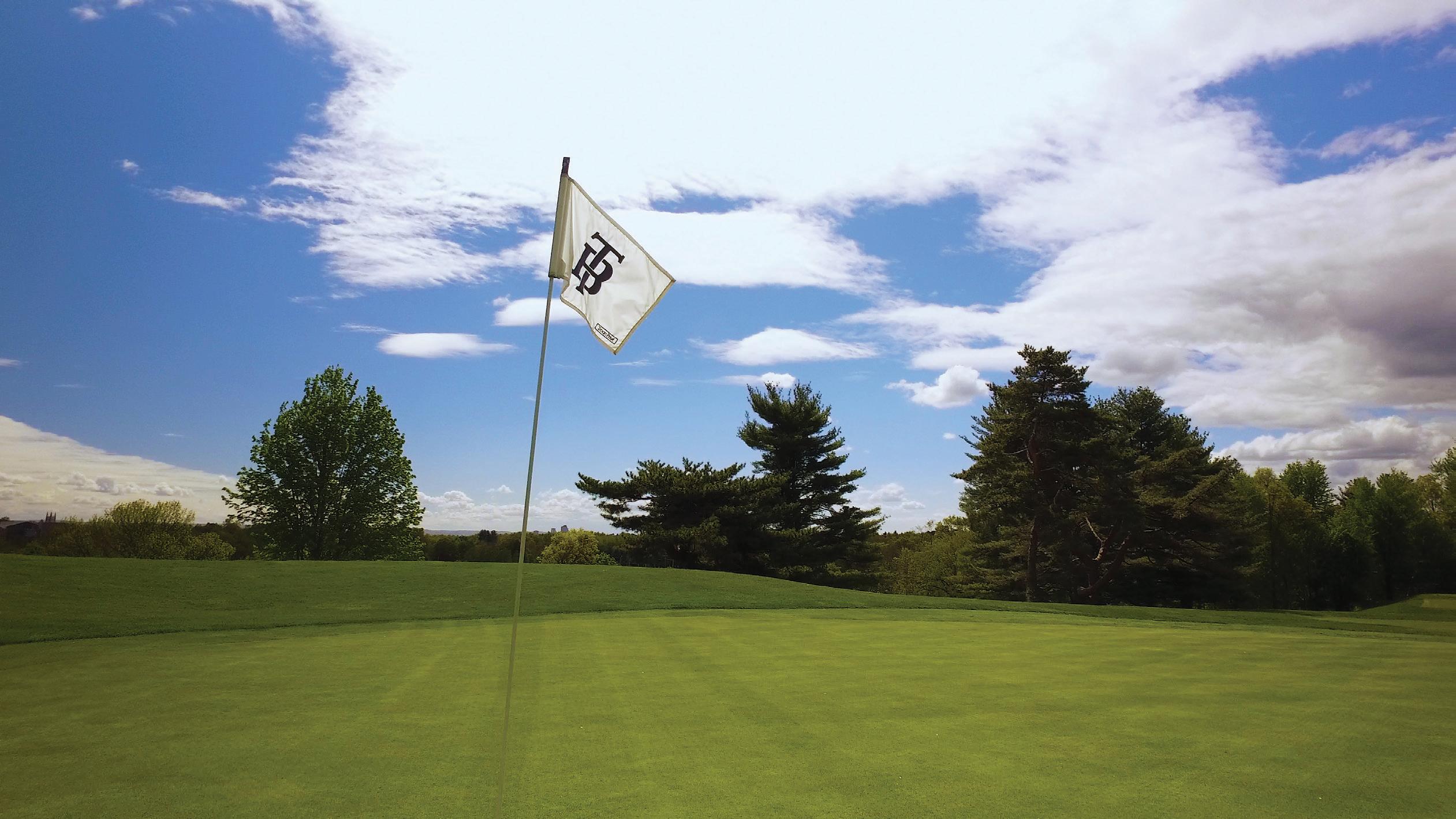
Whitney Farms Golf Club (www.WhitneyFarmsGC.com) in Monroe was designed by Hal Purdy and yardages range from 5,480 yards to 6,714 yards, with slope levels of 127 to 134. The layout starts in stern fashion, with three holes that will test you immediately. The first is a 426 yard par-four, the second another par-four measuring over 400 yards, and the third a 526 yard par-five. After letting up a bit, the front nine again rears its head with four difficult holes to end the outward journey. There are two par-fives that play over or around 500 yards and a pair of par-threes that are 200 yards or longer. The back nine is a bit less severe with shorter par-fours where birdie awaits. But you’ll also encounter two par-fives that play over 560 yards from the tips, and the final hole is a brutal, 442-yard par-four that can make or break a round.
Laurel View Country Club (www.LaurelView.com) in Hamden is a classic Geoffrey Cornish track, and a stern test of playing ability. The course can be stretched beyond 7,000 yards and features some of the toughest par-fours in the state, like the 479-yard fifth. There’s a pond guarding the right side of the green, which often must be attacked with a long iron or fairway wood. Number nine is 450 yards from the back markers, and climbs up a hill to the putting surface, making the hole play 20 to 30 yards longer than its listed yardage.
The seventh hole is a monstrous par-three, measuring around 250 yards from the tips, leaving even the best players with a fairway wood in their hands on the tee box.
Heading East
Coventry’s Twin Hills Country Club (www.TwinHillsCountryClub.com) was built on a former farm and offers golf in a rural setting yet convenient to Hartford and other cities off Rt. 84. Twin Hills has the country charm of stone walls, a covered bridge and its signature stone bridge located on hole number three (a massive 600-yard par-five) that makes one think of the famous bridge crossing to the 12th green at Augusta National Golf Club.
Nestled into the rolling hills of the tiny town of Hebron is Blackledge Country Club (www.BlackledgeCC.net) that boasts two 18-hole courses. The club’s owners added nine holes in 1995 and another nine in 2000, creating what is called the Gilead Highlands course. The newest nine on Gilead Highlands is a bit reminiscent of Carolina courses, with wide fairways, bunkering, and tall pines and oaks framing many of the landing areas and large greens. Anderson’s Glen has the club’s original 18 holes and is another very solid test. The fairways are tree lined and the greens undulating.
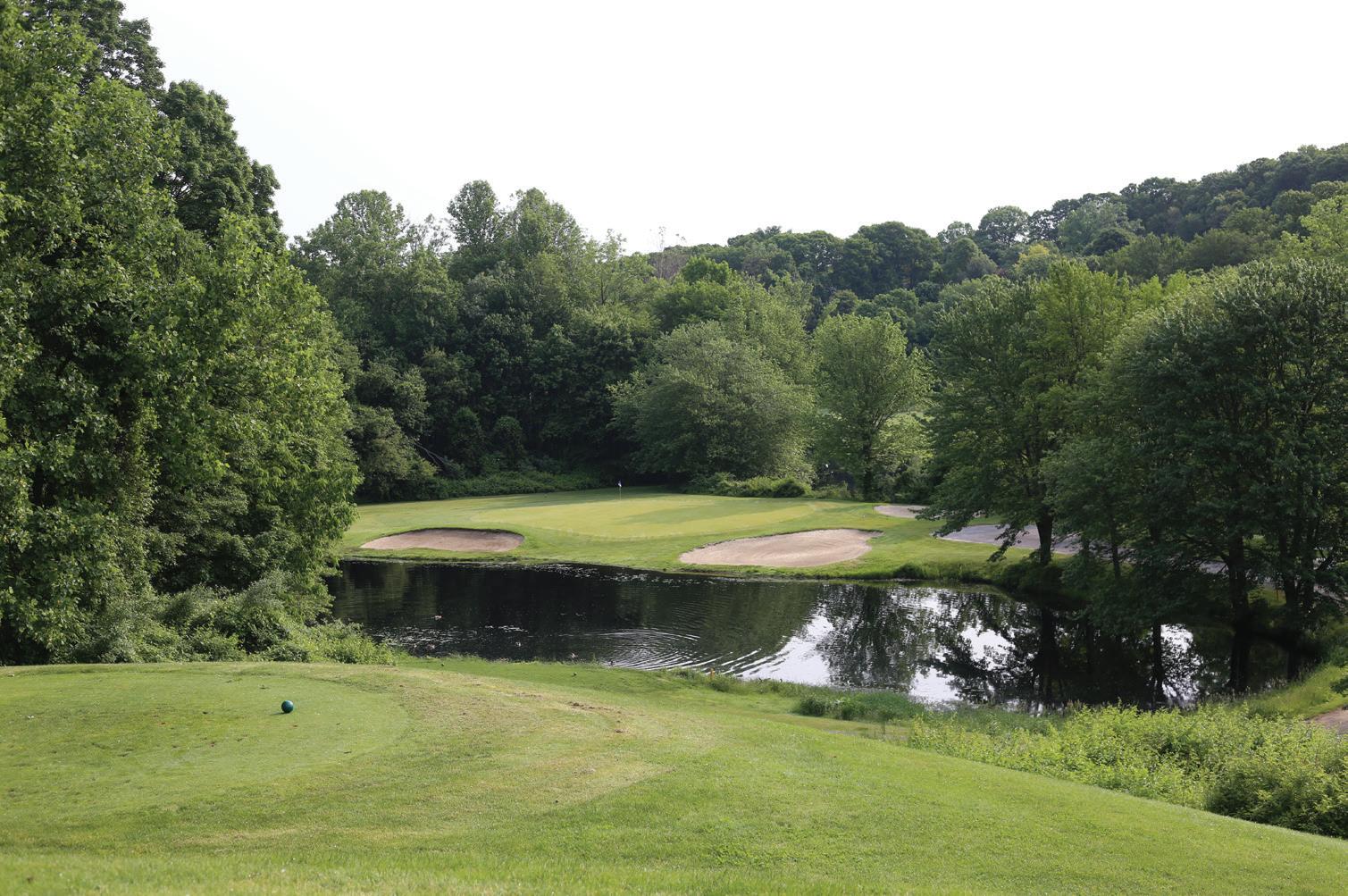

Tallwood Country Club (www.TallwoodCountryClub.com ) in Hebron is known for its classic New England landscape. Situated on over 200 acres of rolling country farmland, it’s another perfect place for a quiet golf getaway. The course offers a pleasingly eclectic mix of strong par-threes, long and demanding and then shorter and tricky par-fours, as well as par-fives that sometimes are reachable in two for long hitters and other times, not so much.
Quarry Ridge Golf Club (www.QuarryRidge.com), located on the slopes of the Connecticut River valley in Portland, offers some of the best views in Connecticut. This is a true shot-maker’s delight, with dramatic elevation changes, a mix of long and short holes, and tricky greens. The course is regularly listed among the best in Connecticut. The course plays 6,369 yards from the back tees, but it’s all about proper club selection and accuracy at
Quarry Ridge. Portland Golf Course (www.PortlandGolfCourse.com), which measures just over 6,200 yards from the tips and plays to a par of 71, is also set in the rolling hills of the Connecticut River Valley. Its tree-lined fairways, various elevation changes, and doglegs make the track challenging and enjoyable for all players. The 405-yard par-four first hole is a strong way to begin a round. The tee shot is relatively easy, but the second shot is down a 60-foot drop to the green, making club selection difficult.
Black Birch Golf Club (www.BlackBirchGolf.com) in Moodus has earned a reputation as one of Connecticut’s “hidden gems.” Ownership has improved the course, which included increased turf quality, new tee boxes on select holes, redesigned holes (13 and 14 in particular), a new fleet of carts, and the installation of an updated irrigation system.
Windham Golf Club (www.WindhamClub.com) first opened in 1922 and was once maintained as a private facility. The putting surfaces are medium in size with some undulation. They roll true and reward good approach shots with makeable birdie opportunities. The rough areas are kept at a height to punish wayward tee shots but still allow players to advance the ball to the greens.
GOLF BY CONNECTICUT’S
Casinos
Elmridge Golf Club (www.ElmridgeGolf.com) in Pawcatuck features three nines that are approachable for golfers of all abilities. The par-fours are on the short side, most measuring between 340 and 370 yards from the middle tees, but a number of them are doglegs. The par-threes are strengths of the layout and several measure close to or over 200 yards. One of the best par-fives on the course is the 525-yard seventh on the Blue Course. The hole bends slightly to the right and a good drive will leave you with a shot to go for the green in two. But there are bunkers guarding the putting surface and the green is elevated.
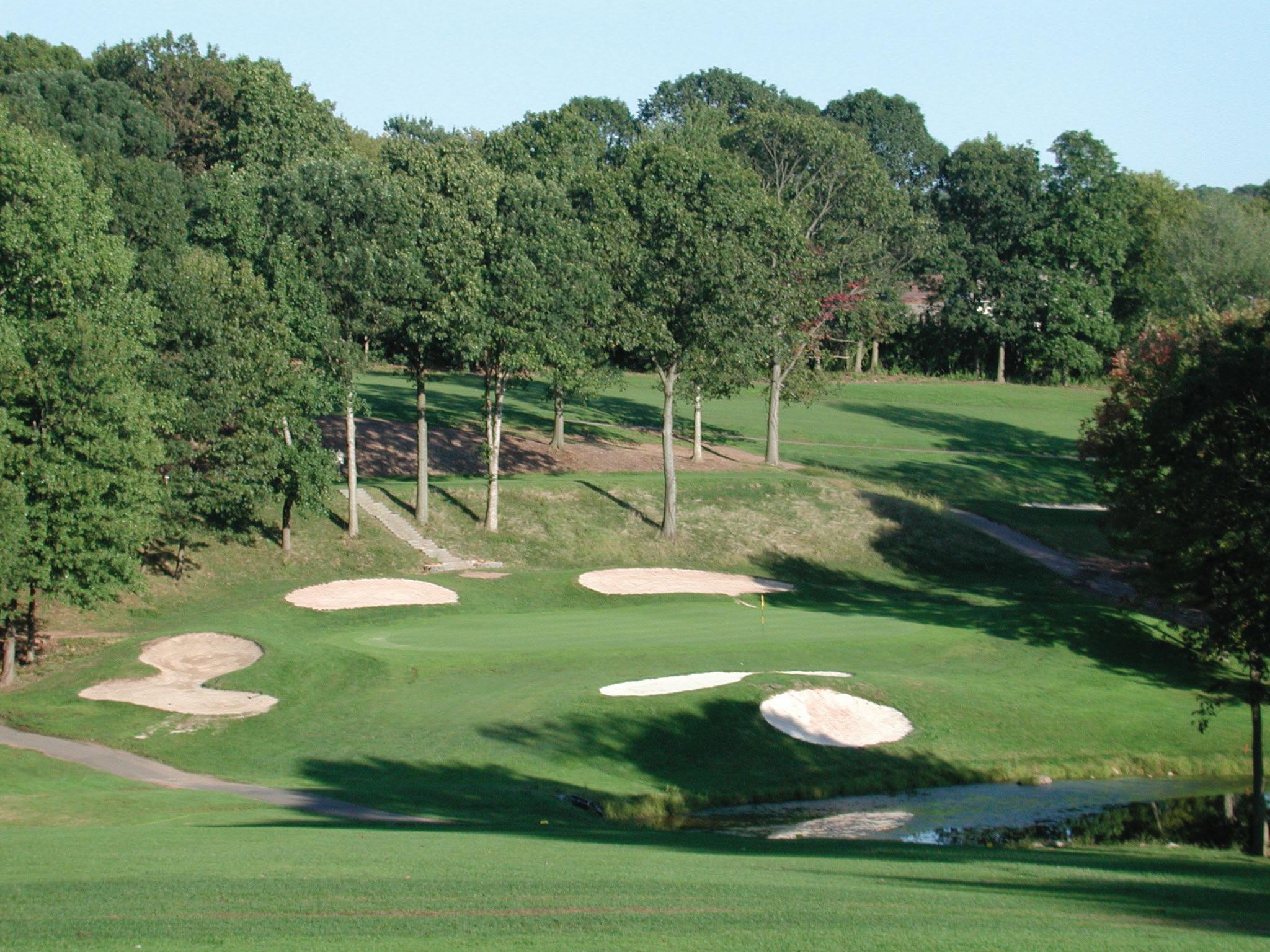
Norwich Golf Club
(www.NorwichGolf.com) is known for its fine playing conditions and is a tricky layout that is fun for players of all abilities. The course opened in 1925 on July 4th. It was designed by Tull and Tull, a famous golf course architectural firm of the day, and there is some indication that Walter Travis, a noted designer and legendary amateur player, had a hand in the routing. Norwich isn’t long, just 6,191 yards from the tips. But its slope of 131 from the championship markers gives you an idea of just how difficult it can be.
River Ridge Golf Course
(www.RiverRidgeGolf.com) in Jewett City opened in May of 1999 and is a carefully maintained course. The first three holes were built on open space that was formerly an apple orchard. The other 15 holes are characterized by rolling hills and scenic vistas that present various challenges. The front side plays to a par of 37 and is a demanding nine holes. It has three of the course’s par-fives, all pretty much asking for three good shots to find the green in regulation.
Robert McNeil re-worked Mohegan Sun Golf Club (www.MoheganSunGolfClub.com) and took a layout first designed by Geoffrey Cornish and reworked by Stephen Kay in 2002 and created something new and special. McNeil opened up to course to give it somewhat of a links feel on many holes, with mounded fairway and greenside bunkers and tall fescue grass growing in the rough areas. In all, five holes were totally rebuilt, the bunkers redesigned and all new greens installed.
